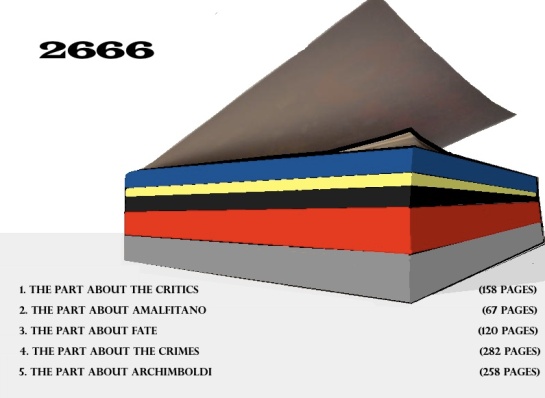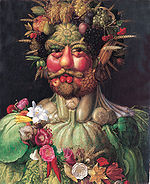Saturday, July 21, 2012
July Meet-Up
Attention, scenesters: our July meet-up is on the books for Tuesday July 31, 8:00 pm., at Frank's North Star Tavern in north Lawrence. We'll be downing $2 Tallboys and putting one helluva of a book to rest. See you!
Reading 2666 Out Loud: The Baroness in the Castle
Hans Reiter and his comrade Wilke discover a series of peepholes in Dracula's castle and spy on an erotic encounter between the Baroness von Zumpe and a Romanian solidier.
Wednesday, July 11, 2012
PBR Book Club's August Selection: Mark Leyner's The Sugar Frosted Nutsack
After the unrelenting bleakness of Matt Bell's apocalyptic, mutant-baby novella Cataclysm Baby and the hundreds of pages of rape and murder that comprise Part IV of Bolano's 2666, we're in serious need of something a bit lighter for August. And luckily we've found something with a title so preposterous half of you won't believe we're serious about reading it. But we're serious. Mark Leyner's The Sugar Frosted Nutsack is the August selection for PBR Book Club.
All we needed was the first paragraph of the recent New York Times Book Review of Nutsack to convince us that Leyner was a novelist our club needed to tackle:
"Mark Leyner writes in a genre that could be called Mark Leyner: gun-to-the-head comedy delivered with a stratospheric I.Q. Leyner’s fiction isn’t narrative so much as a thundering procession of twisted skits, pinging from brainiac literary theory to the latest disgraces of reality TV. Just when it seems that, line by line, there might be no smarter writer on the planet, Leyner indulges in gleefully juvenile sprees of lewdness, asserting the sublime pleasures of the absurd. He is either a genius or a freak, and it may not matter which, because his books are compulsively readable, created by a literary mind that seems to have no precedent."
So what the hell is it about? We're not sure (but apparently something about a group of gods driving around in a van). We do know it it has a scene in which "Bosco makes Mi-Hyun 50 feet tall and pleasures her with the mummified body of King Tutankhamen and the cryonically preserved head of the baseball player Ted Williams."
So pick up your copy today and let's have some laughs with our PBR while also learning "how much is still possible for the novel when tradition is left behind" and "that fiction can be robust, provocative and staggeringly inventive, without for a moment forfeiting entertainment."

Sunday, July 8, 2012
Part IV
Midsummer of 2012 a female between the ages of 30 and 35 finished Part IV, The Part About Crimes, of Bolano's masterwork 2666. The female was later identified as a member of the PBR Book Club, a local group of literary elitists with a penchant for Pabst Blue Ribbon, a popular beer by all accepted standards. The woman had long hair, but it was often kept up wrapped tightly in a bun, due to her training in the library arts or to give potential murders a better look at her neck, where the hyoid bone lies protecting her non-functioning thyroid. Perhaps it was a hormonal imbalance or just the gentle disappointment that comes with finishing a work of brilliance, whatever the cause the woman was found fully clothed, rocking back and forth mumbling "vaginally & anally raped, swabs, broom handles, it was those cousins, working girls never get a break," and perhaps most telling, "why, why did it end?"
Reports had been filtering in throughout the summer of others in similar states, but none quite as distraught. Some claimed there was a backlash against so-called tedious reading. It was said those readers started drinking early and quit only upon reaching Part V. Others hoped to recapture the experience of Part IV by continual rereading and referencing, and thus were able to maintain employment and social obligations. The cases were pursued for a few weeks, but ultimately shelved when no further evidence surfaced.
Giuseppe Arcimboldo: The first Surrealist?
At least one character's name in 2666 has a deeper meaning than what appears on the surface. Who was Arcimboldo?
Vertumnus, Rudolph II Holy, Roman Emperor painted as the Roman God of the Seasons, 1590.
So why pick a Surrealist painter to pay homage to? It is a deliberate writing choice by Bolano to have one of his main characters change his last name from Reiter to a deviated version of Arcimboldo ( Reiter changes his name to Archimboldi).
On one level, the now dead Bolano gives us a wink when he uses Arcimboldo, suggesting that 2666 is surreal, not only in the many dreams and visions in the novel, but how we can read the novel like a dream. And, on another level, Bolano may be giving us insight into the nature of what we take from novels ( or any story telling device, even dreams). Rieter takes ideas from a notebook he finds and reads, such as this painter's name, and absorbs these ideas into his own life after altering them.
More about Arcimboldo
Although unrecognized as a great artist for many years since his death, the surrealists Dali and Magritte claimed Arcimboldo as one of their own, creating a place for him in art history. Man Ray recreated Arcimboldo's "Winter" and Alfred Barr, the founding director of the Museum of Modern Art, included Archimboldo in a 1936 show called "Fantasy in Art, Dada and Surrealism."
Arcimboldo's Winter
Man Ray was inspired by this painting (Seen below)
Magritte and Dali used objects for body parts, as seen here in a Magritte Suurealistic painting
Arcimboldo lived at a time when visual puns were highly regarded. The Surrealist-type paintings of Arcimbaldo show 16th century tastes: naturalism and the grotesque, as in the reversible paintings that are still-life that become faces when the panels are flipped upside down.
daVinci, Michelangelo and others like to make cartoon-like grotesques. Here we see da Vinci's drawing. Arcimboldo saw da Vinci's drawings.
drawing of Arcimboldo
See a slide show of Arcimboldo's work here: http://www.nytimes.com/slideshow/2007/10/09/arts/20071010_ARCI_SLIDESHOW_index.html?ref=design
Sources: http://www.nytimes.com/2010/09/24/arts/design/24arcimboldo.html
Tuesday, July 3, 2012
Books Within Books (Within Books?): Richard Writes About Reading in Bolano's 2666
[contains thoughts on Part IV but no major spoilers]
"Not reading, it might be said, was the highest expression of atheism or at least of atheism as he conceived of it. If you don't believe in God, how do you believe in a fucking book? he asked himself." --Bolano, 2666
From the opening sentence, 2666 announces itself as a book about the process of reading: "The first time that Jean-Claude Pelletier read Benno von Archimboldi was Christmas 1980, in Paris, when he was nineteen years old...". Part I, as I discussed in my last post, is almost entirely about reading, as the four Archimboldi critics create a new world of scholarship through their interpretations of Archimboldi. Also, although I'm struggling to locate good examples, Part I occasionally slips into a direct address to the reader: " 'Yes, of course,' said our four friends" (top of 106). That "our" incorporates the reader and calls attention to the artifice, something I haven't seen at all aside from Part I.
In Part II, the most fascinating book-centered issue is Amalfitano's mysterious geometry text (which he possesses with no memory of purchasing it). Naturally, he does what anyone would do with such a mystery text: he hangs it outside on a clothesline as an "experiment": "it's a Duchamp idea, leaving a geometry book hanging exposed to the elements to see if it learns something about real life." (195). Other reading-related issues of Part II concern letters from Amalfitano's wife, as well as a frustratingly long section where good old Amalfie reads passages from a tome about "Araucanian telepathy."
In Part III, Fate, a writer, heads to Mexico where he listens to an ex-prisoner give a five point lecture about "DANGER. MONEY. FOOD. STARS. USEFULNESS," the latter focusing specifically on the "usefulness" of a book called (amusingly) "An Abridged Digest of the Complete Works of Voltaire." Part II also contains my favorite fictional book title so far: Eating Ribs with Barry Seaman. Fate, like Amalfitano, also spends sections of Part III reading a book. In this case, it's The Slave Trade, which he was given (a gift from the last communist in Brooklyn!) prior to hearing Seaman's lecture The Communist hands him the book along with this advice "Son, I'm going to give you a book that will be of great use to you" (260).
Part IV, or as I call it, The Rape Section, contains the quote used above to open this blog post. There's also a reading devotee in this section, the young policeman Lalo Cura (though I'm not sure his constant reading of outdated crime manuals is going to help him solve these rapes and murders. I hope I'm wrong!). And of course there's the most notable (and, to me, infuriating) aspect of Part IV, the technical "crime-scene" / forensic documentation style of the murder victim sections. Is this meant to contrast wth a section in Part III, in which a "white-haired man" tells Fate about how 19th century writers wrote about death, in such a way "that you might get the idea that there was hardly any crime, or that a single murder could throw a whole country into tumult" (266). The man ends his reflection with these creepy and ambiguous lines about how the murders of society's outcasts were written about: "What happened to them could be written, you might say, it was legible. That said, words back then were mostly used in the art of avoidance, not of revelation. Maybe they revealed something, all the same way. I couldn't tell you" (267). There's no avoidance on Bolano's part in Part IV, however. He wants us to read about every rape and murder in Santa Teresa. So I will. But not without some grumbling.
And here's an illustration of the page lengths of each section from a funny little website called Bullshit English Homework .

Monday, July 2, 2012
Karen tries to keep track of the characters
As I was trying to keep track of characters, I was happy to see someone named Brooks, who writes a blog for his book club, took the time to document the characters of "2666" for its members. It's also good to know that there are other people in book clubs that are also blogging about their books with the same nerdy diligence as members of our PBR Book Club.
Although his blog post is a work in progress, I am impressed with his organization, tenacity, and attention to detail, such as documenting historical people including poets and artists mentioned in Book one. He created a timeline for the first book, and has created a list of victims for the fourth book.
See here: https://docs.google.com/document/pub?id=1qby7k2nQeu7GDjgrlCEYPn3UDJ_V4gdmaGJOArPfDLs
I think I might just contact Brooks and let him know what a good job he did.
Subscribe to:
Posts (Atom)









